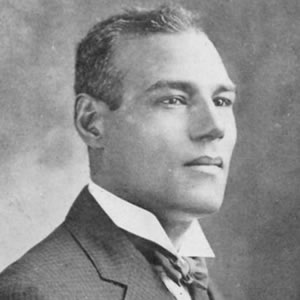S.C. Encyclopedia | Edwin Augustus “Teddy” Harleston was born in Charleston on March 14, 1882, to the shipper-turned-mortician Edwin Gailliard Harleston and Louisa Moultrie. Harleston won a scholarship to the Avery Normal Institute and graduated valedictorian of his class in 1900. He graduated from Atlanta University in 1904 and, though accepted to Harvard, enrolled in the School of Fine Arts in Boston the next year. He studied in Boston from 1906 to 1912. He graduated from the Renourd Training School for Embalmers in 1917.

Harleston
Harleston was a founding member of the Charleston chapter of the National Association for the Advancement of Colored People (NAACP) in 1917 and served as its first president. In 1919 he organized a campaign and petition drive to allow black teachers to teach in the black public schools in Charleston. The effort resulted in a change of state law. That same year Harleston attended the NAACP convention in Cleveland, Ohio, as a branch delegate.
On September 15, 1920, Harleston married Elise Forrest in Brooklyn, New York, where she attended photography school. They made their home in Charleston and shared an art studio. The Harlestons adopted their niece Gussie after her mother succumbed to tuberculosis in 1920.

From “The Shrimp Man,” oil painting, 1920, in the Edwin A. Harleston Collection, Avery Research Center at the College of Charleston.
The subject of much of Harleston’s early artwork was family, friends, and daily life. “The Charleston Shrimp Man,” “The Honey Man,” and “The Old Servant” featured images that evoked the rich African American cultural heritage of the Lowcountry. Many of Harleston’s compositions during World War I illustrated the role of African Americans in the war effort, demonstrating their patriotism, sacrifice, and participation on the war front. His drawing “A Colored Grand Army Man,” after a photo taken by Elise, won first place in the NAACP’s Spingarn Competition.
By the 1920s Harleston had established a solid reputation as a portrait artist. His strong portraits featured prominent businessmen, civic leaders, and their families—most of whom were African American. His commissioned portraits included Edward Twitchell Ware (president of Atlanta University) and the daughter of W. E. B. Du Bois. On the recommendation of Du Bois, he was commissioned to create an official portrait of the prominent industrialist and philanthropist Pierre Samuel duPont. His noted portraits of South Carolina congressman Thomas Miller and of Aaron Douglas, a premier artist of the “New Negro” movement of the 1920s, are in the collections of the Charleston Museum. Harleston went to Nashville in 1930 at the invitation of Douglas and assisted him in painting murals in the new library at Fisk University.
Harleston died in Charleston on May 10, 1931, and was buried in the Harleston plot of the Unity and Friendship Cemetery. See color illus.
— Excerpted from an entry by Jane M. Aldrich. This entry hasn’t been updated since 2006. To read more about this or 2,000 other entries about South Carolina, check out The South Carolina Encyclopedia, published in 2006 by USC Press. (Information used by permission.)



 We Can Do Better, South Carolina!
We Can Do Better, South Carolina!
























